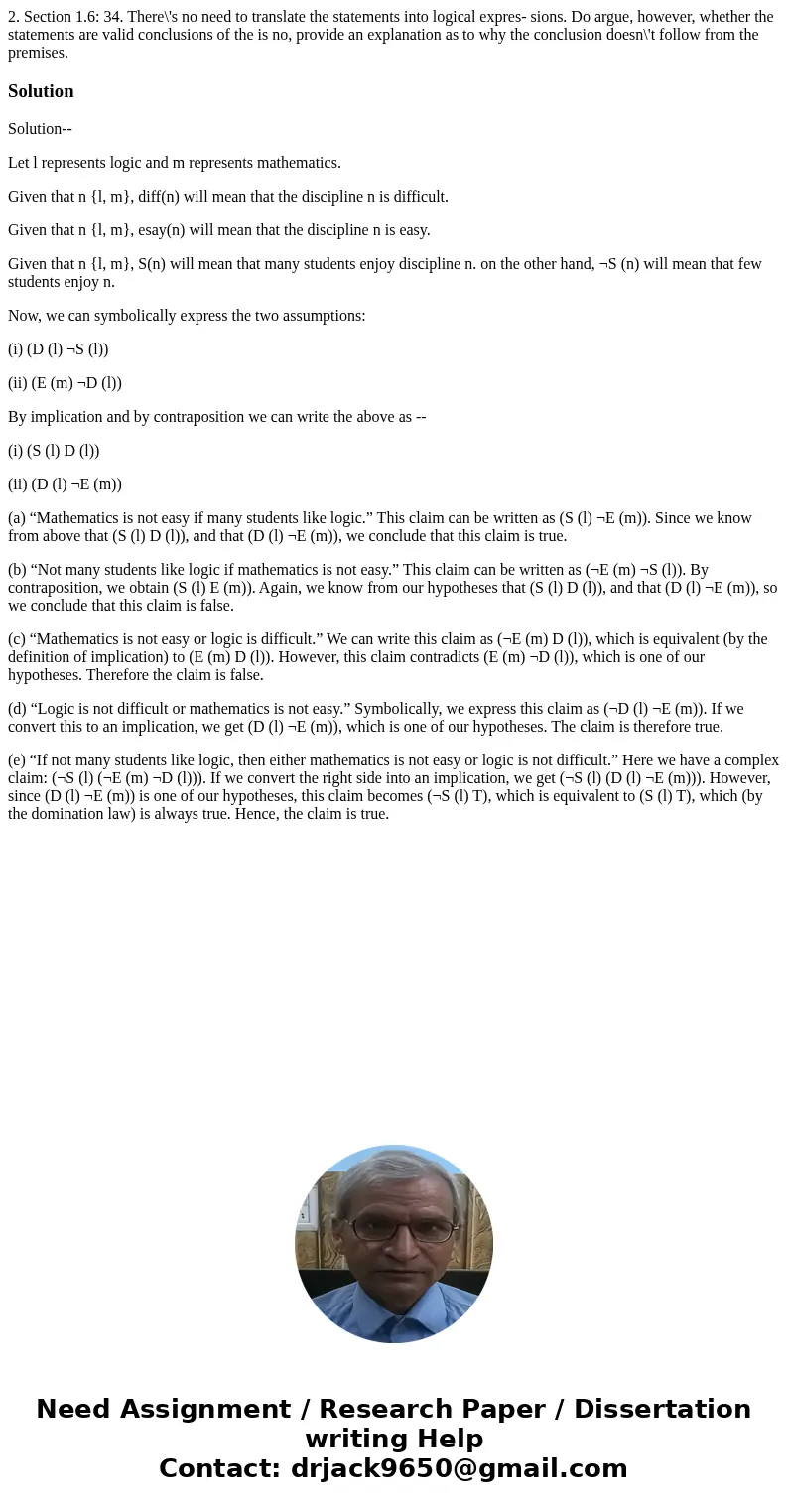2 Section 16 34 Theres no need to translate the statements i
Solution
Solution--
Let l represents logic and m represents mathematics.
Given that n {l, m}, diff(n) will mean that the discipline n is difficult.
Given that n {l, m}, esay(n) will mean that the discipline n is easy.
Given that n {l, m}, S(n) will mean that many students enjoy discipline n. on the other hand, ¬S (n) will mean that few students enjoy n.
Now, we can symbolically express the two assumptions:
(i) (D (l) ¬S (l))
(ii) (E (m) ¬D (l))
By implication and by contraposition we can write the above as --
(i) (S (l) D (l))
(ii) (D (l) ¬E (m))
(a) “Mathematics is not easy if many students like logic.” This claim can be written as (S (l) ¬E (m)). Since we know from above that (S (l) D (l)), and that (D (l) ¬E (m)), we conclude that this claim is true.
(b) “Not many students like logic if mathematics is not easy.” This claim can be written as (¬E (m) ¬S (l)). By contraposition, we obtain (S (l) E (m)). Again, we know from our hypotheses that (S (l) D (l)), and that (D (l) ¬E (m)), so we conclude that this claim is false.
(c) “Mathematics is not easy or logic is difficult.” We can write this claim as (¬E (m) D (l)), which is equivalent (by the definition of implication) to (E (m) D (l)). However, this claim contradicts (E (m) ¬D (l)), which is one of our hypotheses. Therefore the claim is false.
(d) “Logic is not difficult or mathematics is not easy.” Symbolically, we express this claim as (¬D (l) ¬E (m)). If we convert this to an implication, we get (D (l) ¬E (m)), which is one of our hypotheses. The claim is therefore true.
(e) “If not many students like logic, then either mathematics is not easy or logic is not difficult.” Here we have a complex claim: (¬S (l) (¬E (m) ¬D (l))). If we convert the right side into an implication, we get (¬S (l) (D (l) ¬E (m))). However, since (D (l) ¬E (m)) is one of our hypotheses, this claim becomes (¬S (l) T), which is equivalent to (S (l) T), which (by the domination law) is always true. Hence, the claim is true.

 Homework Sourse
Homework Sourse